NASA keeps astronauts aboard the ISS as issues plague Boeing’s Starliner spacecraft
Not everyone would be happy to hear that a short job would become months of work. National Aeronautics and Space Administration (NASA) astronauts Butch Wilmore and Suni Williams, however, were grateful to be spending more time on the International Space Station (ISS) after finding their week-long trip extended into at least an eight-month stay (1, 2). Instead of returning on June 14, 2024, they will now be stuck in space until at least next February (3). Despite missing their families, the two said they will enjoy the extra time on the station (2).
Wilmore and Williams first joined as test pilots for Boeing’s Starliner spacecraft, a vehicle developed in collaboration with NASA’s Commercial Crew Program, after the original crew left due to delays. They are both veteran NASA astronauts and retired Navy captains who have spent months aboard the ISS before. Wilmore is a 61-year-old former combat pilot from Mount Juliet, Tennessee, and Suni Williams is a 58-year-old helicopter pilot from Needham, Massachusetts (1).
NASA created the Commercial Crew Program (CCP) after the end of its space shuttle program (1). The shuttle program had been NASA’s only way of sending astronauts to the ISS, and after, it relied on its partnership with Roscosmos, the Russian space agency, for rides. The goal of the CCP was to return spaceflight to American soil by having “safe, reliable, and cost-effective transportation” to the station by commercial U.S. companies (4). Ever since receiving the contract from NASA in 2014, Boeing’s Starliner program has been plagued by delays, which was planned to be operational by 2017 (1, 5). Severe software trouble prevented Starliner’s first test flight in 2019 from reaching the station and prompted a redo in 2022 (1).
Starliner approaches the ISS during its second orbital test in 2022. https://commons.wikimedia.org/wiki/File:Boeing%27s_Starliner_crew_ship_approaches_the_space_station_(iss067e066735)_(cropped).jpg
The first crewed Starliner mission finally launched on June 5, 2024, atop United Launch Alliance’s Atlas V rocket from Cape Canaveral Space Force Station. It was the first time the Atlas V carried people since Project Mercury in 1962 when John Glenn became the first American to orbit the Earth. The mission was the 100th launch for the Atlas V rocket, which typically carries satellites and other spacecraft (1).
The mission’s first launch attempt in May was postponed after parachute and other issues, including a helium leak in the propellant system, arose. Engineers deemed the leak to be isolated and small enough to pose no concern. However, after the liftoff in June, more leaks occurred, and five thrusters failed. All but one of the thrusters restarted in flight (6).
Additionally, NASA and Boeing identified helium leaks and experienced issues with the spacecraft’s reaction control thrusters during the craft’s approach to the ISS on June 6. Because of these anomalies, NASA postponed the astronauts’ return while it determined how to proceed with the mission (4). After weeks of reviewing data, conducting in-space and ground testing, hosting independent reviews, and developing contingency plans, the space agency decided to prioritize safety (4, 7). The uncertainty and lack of concurrence from experts did not meet NASA’s safety and performance requirements for human spaceflight and prompted the agency to decide to return Starliner without its crew (7).
While Boeing believed that Starliner was safe enough to return the astronauts, NASA decided not to accept any more risk than necessary. It made the announcement on August 24, and NASA Administrator Bill Nelson said lessons from the two space shuttle accidents played a role in making the decision (6, 7). He said that open dialogue was encouraged rather than suppressed (6). “The decision to keep Butch and Suni aboard the International Space Station and bring Boeing’s Starliner home uncrewed is the result of our commitment to safety: our core value and our North Star,” Nelson said. The return also allowed engineers to collect more data while avoiding any extra risks (7).
Ground testing revealed that thruster seals were swelling and obstructing the propellant lines (6). Engineers suspected that the more thrusters fired, the hotter they became, causing the seals to swell. However, as the section holding thrusters is ditched before reentry, engineers were not able to examine any of the parts (5). The 28 thrusters on the capsule are vital to keep it pointed in the right direction while bigger engines steer the spacecraft out of orbit (6).
Starliner detached from the space station on September 6 after spending close to three months in space (4). After undocking, flight controllers did some more thruster testing, where one failed to ignite (5). The craft touched down at White Sands Space Harbor in New Mexico on September 7 at 12:01 a.m. EDT (4). Although the return went smoothly, more thruster issues arose (5).
Now, Wilmore and Williams will instead return to Earth with the next mission using SpaceX’s Crew Dragon capsule. The Crew-9 mission, atop a typical Falcon 9 rocket, launched from Cape Canaveral Space Force Station in Florida on September 28. On board were only two people, NASA astronaut Nick Hague and Russian cosmonaut Aleksandr Gorbunov, instead of the usual four to make space for Wilmore and Williams on the way home (8).
Wilmore and Williams inside the vestibule between Starliner and the ISS’s Harmony module. https://www.nasa.gov/wp-content/uploads/2024/07/astronauts-in-space.jpg
Meanwhile, the four will spend about five months at the ISS before returning to Earth no earlier than February 2025. Wilmore and Williams will fulfill the duties of the original Crew-9 team, NASA astronauts Stephanie Wilson and Zena Cardman, who were removed from the mission (8). Instead, they are “eligible for reassignment on a future mission.” Chief astronaut Joe Acaba made the decision after considering the crew’s previous spaceflight experience in commanding the flight and the need to have a Roscosmos cosmonaut to continue operating critical systems at the station (9).
The Crew-9 mission reached orbit without any problems and docked at the ISS at about 5:30 p.m. EDT on September 29. However, the second stage of the Falcon 9 experienced an off-nominal deorbit burn, which caused it to land outside its intended area. SpaceX has paused Falcon 9 launches while it investigates the issues (8).
Despite the issues Boeing has faced, NASA says it is confident in Starliner’s future missions (5). Boeing is supposed to make six more Starliner trips for NASA (1). The goal is for SpaceX and Boeing to each do one launch per year until 2030 when the space station is scheduled to be decommissioned (5).
Sources
- Dunn, M. (2024, June 5). What to know about Boeing’s first spaceflight carrying NASA astronauts. AP News. Retrieved from https://apnews.com/article/boeing-test-flight-astronauts-space-station-0d773b17baca7c51427371c54d6ac47b
- Wilson, C. (2024, September 13). Astronauts trying to make the most of their time stuck in space. BBC News. Retrieved from https://www.bbc.com/news/live/c39k9gm1d9yt
- Mesa, J. (2024, July 18). Boeing Starliner Timeline: Launch Delays, System Failures and Milestones. Newsweek. Retrieved from https://www.newsweek.com/boeing-starliner-astronauts-stuck-return-timeline-1926620
- Taveau, J. (2024, September 7). NASA, Boeing Welcome Starliner Spacecraft to Earth, Close Mission – NASA. NASA. Retrieved from https://www.nasa.gov/news-release/nasa-boeing-welcome-starliner-spacecraft-to-earth-close-mission/
- Dunn, M. (2024, September 7). Boeing’s Starliner returns to Earth with no astronauts aboard. AP News. Retrieved from https://apnews.com/article/nasa-stuck-astronauts-boeing-starliner-92dca67a1fbecf05f5f0e6e2e79afc3b
- Dunn, M. (2024, August 25). NASA: Stuck Boeing Starliner astronauts will return in 2025 with SpaceX. AP News. Retrieved from https://apnews.com/article/boeing-spacex-nasa-astronauts-starliner-e4e81e5a6c23dee2f8f72260ddea011c
- Taveau, J. (2024, August 24). NASA Decides to Bring Starliner Spacecraft Back to Earth Without Crew – NASA. NASA. Retrieved from https://www.nasa.gov/news-release/nasa-decides-to-bring-starliner-spacecraft-back-to-earth-without-crew/
- Wattles, J. (2024, September 30). Crew-9 astronauts arrive at space station after SpaceX reports rocket anomaly. CNN. Retrieved from https://www.cnn.com/2024/09/29/science/spacex-crew-9-iss-starliner-astronauts/index.html
- Donaldson, A. (2024, August 30). CORRECTION: NASA’s SpaceX Crew-9 Changes Ahead of September Launch – NASA. NASA. Retrieved from https://www.nasa.gov/news-release/correction-nasas-spacex-crew-9-changes-ahead-of-september-launch/


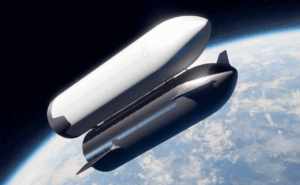

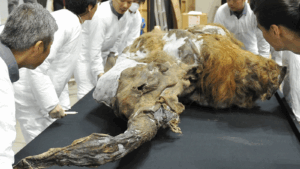


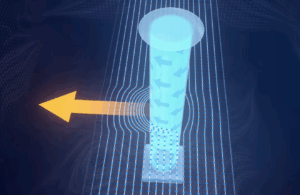
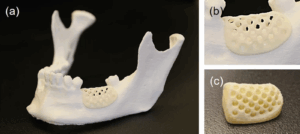
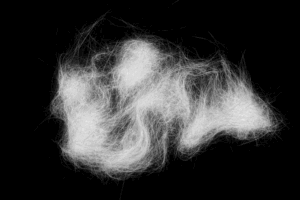


Comments are closed.